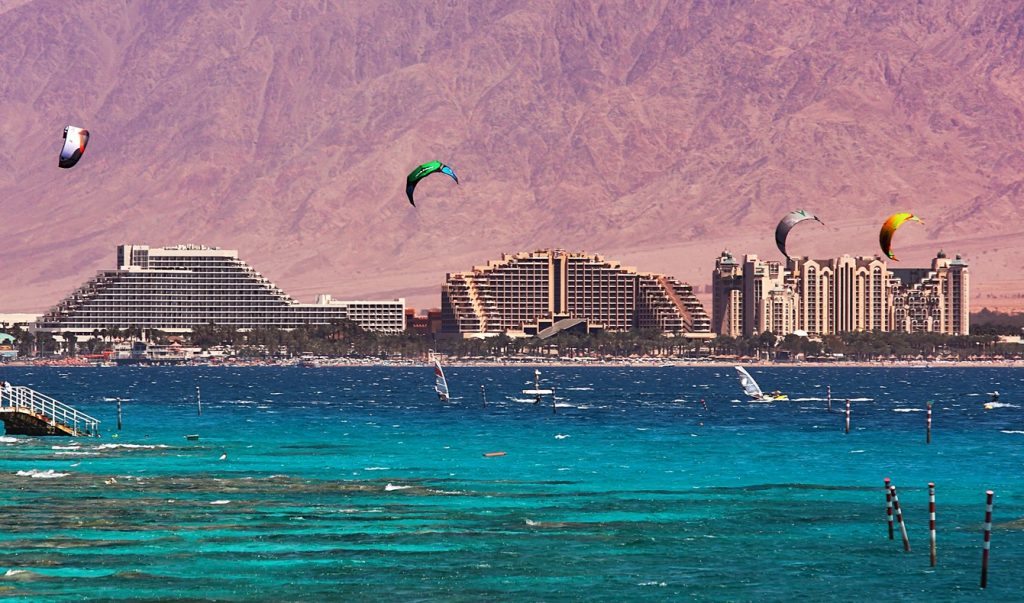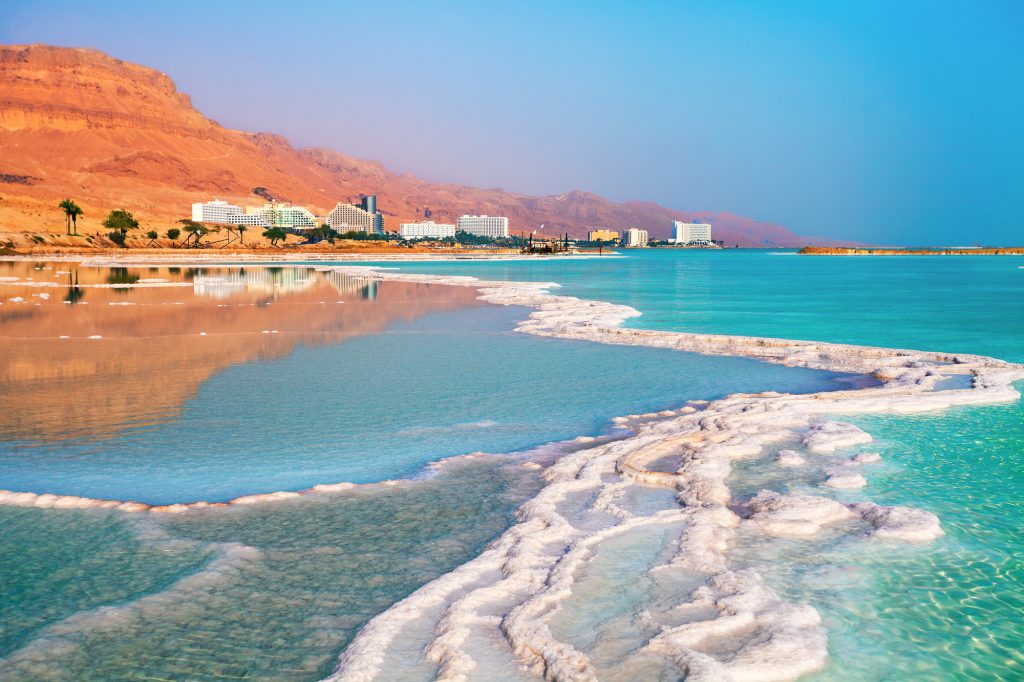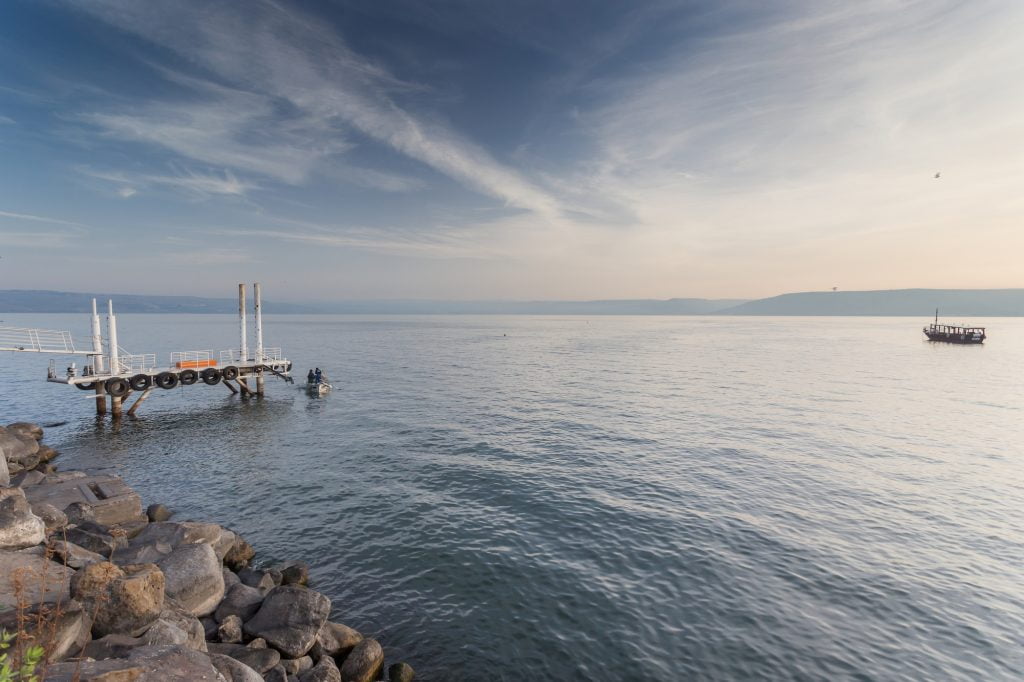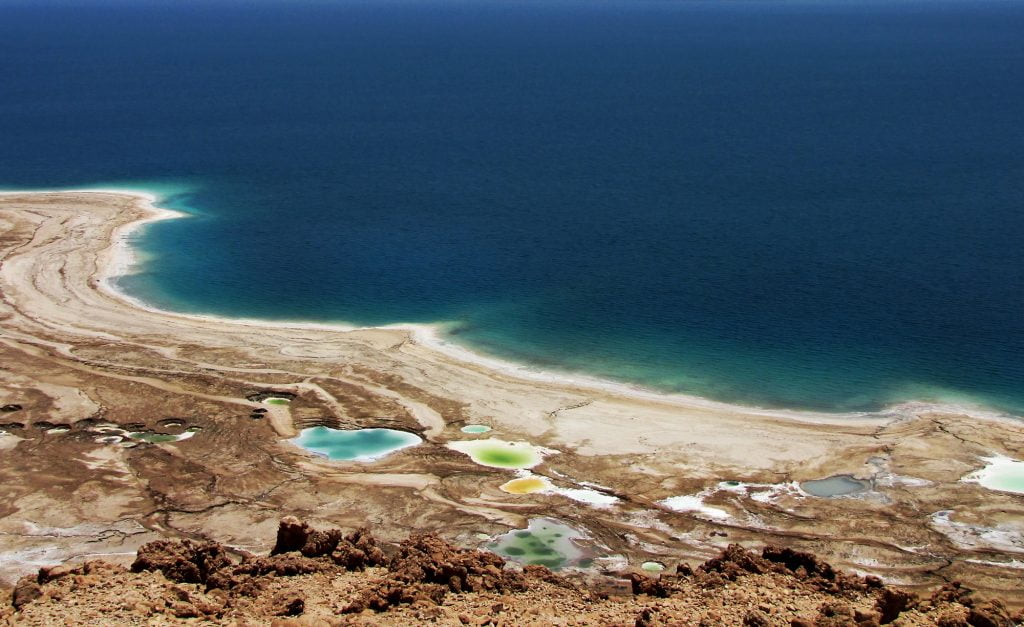This article was written for NoCamels by ZAVIT – Science and Environment in Israel
The Dead Sea, which lies 1,380 feet (approximately 420 meters) below sea level, making it the lowest place on Earth is declining at a rate of about four feet (1.2 meters) per year, according to Israel’s Ministry of Environmental Protection. This is due to mineral extraction for consumer use, diversion of waterways from the Dead Sea to other water sources, and the hot and arid climate of the Middle East that is largely unforgiving on water replenishment.
This is why the Red Sea-Dead Sea Canal Conveyance was signed and agreed upon in 2013. The multi-billion-dollar initiative would help alleviate the water crisis in the region by piping water from the Red Sea to the Dead Sea through a plant in Aqaba, bringing potable water to Jordan, Israel, and the Palestinian territories.
SEE ALSO: Salty Mystery: Joint US-Israeli Study Aims To Answer Salt Buildup Puzzle In Dead Sea
Oded Fixler, the deputy director-general of Israel’s Ministry of Regional Cooperation, says, “The Red Sea-Dead Sea Conveyance is a very important project for both parties as well as the environmental world. It is a first step in starting to recover the Dead Sea and supplying more drinking water to the region, which is needed because of population growth and climate change.”
The primary idea of the initiative is to build a desalination plant in Aqaba that would take seawater from the Red Sea and produce freshwater for both, Jordan, Israel, and Palestinian territories. The leftover brine (saline component removed from the original Red Sea water) would then be transferred north to the Dead Sea in order to significantly slow down the sea level decline. The project would take about five years to complete, according to Fixler.
Over 200 kilometers (125 miles) of piping would be built in Jordan to transfer the water from the Red Sea to the Dead Sea, and water turbines would be installed in the pipes on the way down to the Dead Sea in order to produce green hydroelectric energy.
Logistics and Mending Relationships
The idea behind the initiative goes back to 2005 when Jordan, which controls the eastern area of the Dead Sea, and Israel, which controls the western part, alongside the Palestinian Authority (which controls the northeastern-most point of the Dead Sea) agreed to conduct a feasibility study. The parties approached the World Bank to conduct the study for the initiative, which they believed would slow the decline of the Dead Sea’s water levels, while providing freshwater to Jordan, Israel, and the Palestinian territories. Once the study, which took place from 2007 to 2012, deemed the project feasible, the three parties signed the deal to implement the Red Sea-Dead Sea Canal Conveyance in 2013.
But the project has long been delayed by bureaucratic hurdles, financing difficulties, and environmentalist objections, as well as diplomatic tensions between the countries.

While Jordan and Israel have maintained a peace agreement since 1994, relations between the two have not always been the warmest. Israel’s ties with the Palestinian Authority have also been rocky. Israeli support for the project also stems from the need to preserve the stability of the Jordanian monarchy’s rule the Jordanian regime stability, which keeps its border with Israel secure.
“The main goal of this project is to enhance regional cooperation between the parties involved,” says Fixler. “There is some tension, but when you are doing things together for the benefit of the two sides, it helps to improve the atmosphere of the relations.”
“We are now in the process of budgeting the project,” Fixler says, but points to Israeli national elections for the hold-up. “The Israeli government is transitioning, so we can’t make further decisions right now. Things are at a pause, but could pick back up in October or November,” he adds.
The bureaucrat says the initiative may spur additional joint projects that benefit the region.
“I hope that we will be able to find new projects that will be for the benefit of more countries in the Middle East. When we do things together, talking to each other, forming committees to advance our well-being, it is good for the entire population of the Middle East,” Fixler says.
Sign up for our free weekly newsletter
SubscribeEnvironmental risks and challenges
The Dead Sea would need a billion cubic meters of water every year in order to be replenished. However, the project would only supply between 200 (phase 1) and 400 (phase 2) million cubic meters from the Red Sea.
In addition, while bringing new brine from the Red Sea may partially slow sea-level decline and the formation of new sinkholes, there are negative consequences. Eli Raz, M.S., who specializes in geology, biology, and environmental consulting mentions that there are environmental threats that need to be considered before implementing this project.

For example, Red Sea brine has a different chemical composition to that of the Dead Sea. This could produce gypsum (a soft sulfate mineral composed of calcium sulfate dihydrate) as a byproduct, causing a change to the unique benefits that the Dead Sea environment has to offer, thus impacting tourism.
However, Doron Merkel from the Water Authority and Israel’s World Bank representative summarizes that if 400 million cubic meters of seawater per year is added to the Dead Sea, gypsum precipitation will be negligible. Anything greater than this amount may cause a small amount of gypsum to form, but not enough to change the water characteristics.
Massive pumping is also a concern when it comes to changes in the Gulf of Aqaba ecosystem, according to Raz. Merkel says that the feasibility study showed that pumping 2 billion cubic meters of water per year from a depth of 140-160 meters would only cause marginal impacts to the ecosystem. Pumping at this depth, which is below the photic zone (the zone at which light penetrates the water), would ensure coral recruitment (when coral larvae, which float and drift in the upper layers of the water column attach to a substrate and establish themselves as members of the reef community).
The World Bank feasibility study concluded that cyanobacteria (photosynthetic, oxygen-producing bacteria) form when Red and Dead Seas waters mix, which would impact the Dead Sea tourism industry. Merkel’s summary, on the other hand, explains that even with a flow of 400 million cubic meters of water per year to the Dead Sea, cyanobacteria blooms will not form due to high salinity levels in the surface waters.
What about the Mediterranean?
There have also been talks of alternative strategies to the Red Sea-Dead Sea Conveyor Project that would keep the Dead Sea from disappearing. One of them, put forth by Raz, would use water from the Mediterranean instead of the Red Sea to replenish the Dead Sea. To this end, Raz suggests utilizing the National Water Conveyor as a means of transportation for the water needed for this undertaking.
“The best way to bring water from the Mediterranean to the Dead Sea is by route of the National Water Conveyor, from Haifa to the Sea of Galilee (Kinneret)” explains Raz.
SEE ALSO: Israel Reveals ‘World’s Longest Salt Cave’ In Mount Sedom Near Dead Sea
Since this infrastructure already exists, this alternative would be a lot cheaper and less controversial, he says. The Kinneret would be used as “binational” storage of desalinated water for both Israel and Jordan, since Jordan does not have a place to store water. Increasing Kinneret intake and flow to the Jordan River, would ideally increase the water quality of these waterways, slow the decline of the Dead Sea, and promote cooperation between the two nations, Raz believes. This option would also avoid laying down pipes that would otherwise be located in a tectonically active area with the highest concentration of earthquakes in the region. This could cause structural damage and leakage from the pipes, contaminating soil, groundwater, and wells.

But this solution has its challenges. The desalination process is expensive and produces an excess of greenhouse gasses (GHGs). The Kinneret is a natural freshwater source, therefore, the water produced from desalination, which would lack mineral make-up (with the exception of calcium carbonate which is added in post treatment) would change the composition of the Kinneret’s waters. Also, the brine extracted during desalination would be diluted and discarded into the ocean, which might cause adverse environmental impacts such as changing the chemical composition of the surrounding water, and affecting shallow sea bottom ecosystems.
The Kinneret is losing on average about one cm of water per day from evaporation, as measured between April and October this year. If desalinated water was brought to the Kinneret and then flowed to the Jordan River, millions of cubic meters of desalinated water would be lost due to evaporation. And because it takes a huge amount of energy to produce desalinated water, this loss would also be represented in the extensive GHGs released from this process.
“The Dead Sea needs a billion cubic meters of water every year,” says Dr. Adi Levi, Scientific Director at the Israel Society of Ecology and Environmental Sciences. “The water needed for the Dead Sea restoration can’t come from an area that already has an insufficient amount of freshwater, and whose problems are only exacerbated by climate change”, he adds.
Furthermore, there is no certainty that freshwater flowing from the Dgania dam at the southern end of the Kinneret would even reach the Dead Sea, due to vast agricultural activity on both sides of the Jordan Valley and an extreme scarcity of irrigation water especially on the Jordanian side, he concludes.
Related posts

Resilient And Nutritious New Plant-Based Milk Aims To Make A Splash

Chocolate From Cultivated Cocoa Comes Without Environmental Toll

Plastic Fantastic: Startup Takes PVC Back To Its Crude Oil Roots




Facebook comments